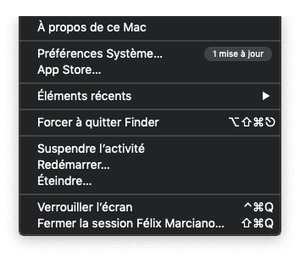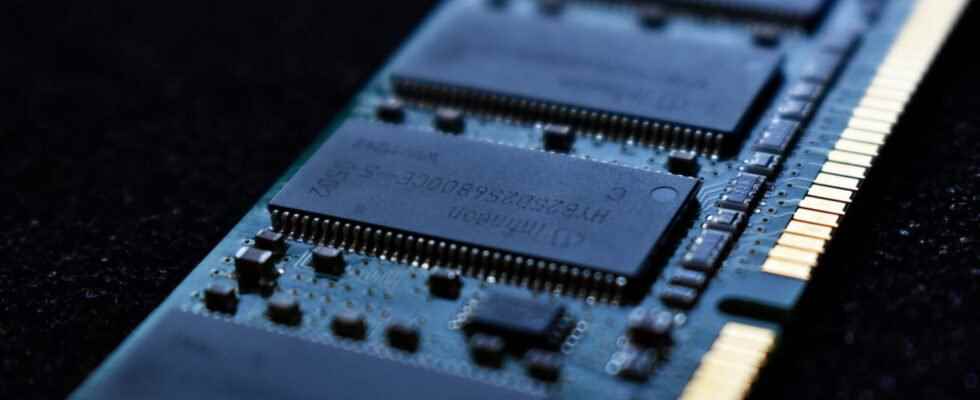No need to open the case and remove the RAM bars to know the amount of RAM installed in your computer: on PC as on Mac, Windows and macOS give you the information in a few clicks.
Random Access Memory – or Ram, is your computer’s “short-term memory”. It is in this space that the software that you launch is housed, with all the associated data (open documents, Web pages, etc.). In general, all information being processed on your computer is temporarily stored there for quick access by the processor. Indeed, unlike so-called mass memory – hard drive, SSD, USB key, etc. – which stores all these elements permanently, the random access memory loses all its contents as soon as the machine is switched off, because it needs to be supplied with electricity permanently to fulfill its role.
The Ram is a very important workspace. The more RAM you have in your computer, the more information and programs you can load simultaneously, and the smoother it runs – although that’s not the only thing to consider. If you find that your PC or Mac slows down when you run several programs at once, you may be running out of RAM. In the past, the amount of RAM was measured in megabytes (symbol MB). Today, we speak in gigabytes (GB). And it takes at least 4 GB to run a PC or Mac. With recent versions of Windows and macOS, 8 GB is recommended, and we even recommend 16 GB to be really comfortable.
Physically, RAM comes in the form of small electronic components – “chips”, as they often say – grouped together in modules – two, four, eight, etc. – which constitute sorts of elementary “lockers”. These modules are either soldered directly onto the computer’s motherboard – and therefore irremovable – or placed on small removable cards – the famous Ram strips – inserted into specific supports. However, you don’t have to open your computer’s case to find out how much RAM it has. The operating system – Windows or macOS in most cases – provides you with the information in a few clicks.
There are several ways to know how much Ram is installed in a PC with recent versions of Windows (Windows 10 and Windows 11).
► Type the keyboard shortcut Windows + I or right-click on the start menu and select Settings. In both cases, the window Settings appears, with a slightly different layout depending on whether you are using Windows 10 or Windows 11.
► Then click on the heading System. The contents of the window change. Then click on About, at the bottom of the left column. The amount of Ram installed is then displayed in clear text in the right pane, in the section Device Specifications.
► Unfortunately, Windows does not give many other details as standard. It is possible to know how many memory slots are used by going through Device Manager, in the Performance tab, then in the Memory section. But the information is not always reliable, as we have found.
► To learn more about Ram (type, frequency, etc.), it is best to go through specialized software such as Speccy, AIDA64 Extreme, CPU-Z or Sandra Lite. See our fact sheet for more information on this subject.
► Finally, note that you can also have technical information on the Ram by going to the Bios or UEFI settings. But this can only be done when starting the computer, by pressing a particular key on the keyboard before starting Windows. See our practical sheet to find out how to access it.
Depending on your needs, macOS can simply tell you the amount of RAM installed or give you more details on its type and expansion possibilities.
► Click on the apple menu, at the top left of the screen, then, in the drop-down menu, click on About This Mac, at the top of the list.

► The window that appears clearly shows you the exact amount of RAM installed in your Mac, and even its type and operating frequency.
► For more details, click on the button System report… in the window About This Mac. In the new window that appears, click on the Memory section, in the left column. The right pane then tells you how many “memory slots” – connectors, banks or slots, in English – your Mac has as well as the type and the capacity of the bars present. macOS even tells you if your memory can be upgraded, i.e. increased. Nice !
► Note that this window allows you to have a lot of other technical information about your Mac, for both hardware and software. For more information on the subject, consult our fact sheet.





